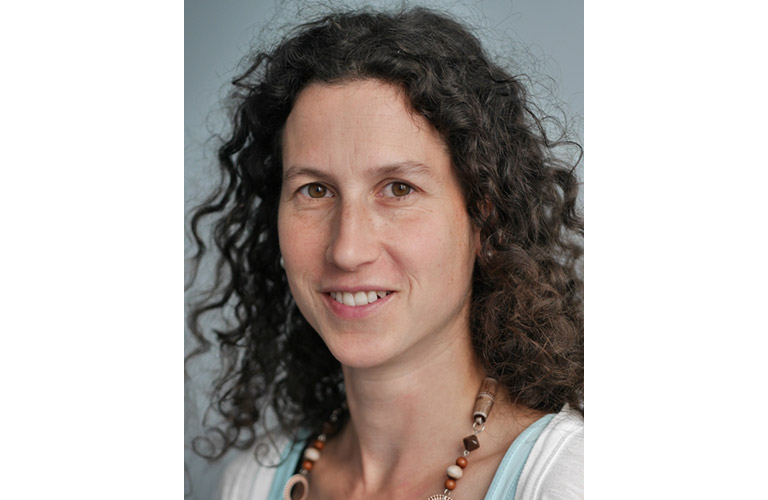Better Speech Understanding with Signia Nx CROS/BiCROS Instruments
Veronika Littmann, Ph.D. & Alastair Manders, Ph.D.

Single sided deafness (SSD) is characterized by a substantial loss of functional hearing ability in one ear, to the extent that amplification provides little or no benefit on that side. While many patients with SSD have normal to near-normal contralateral hearing ability, the condition frequently occurs with hearing loss also present in the better ear.
Sufferers of SSD experience a unique array of auditory challenges. One prominent difficulty is the reduced audibility of sound originating from the side of the patient’s worse ear. This occurs due to the “head-shadow effect”, in which the level of sound originating on the side of the bad ear is attenuated as it travels around the head to the better hearing ear. This effect is more pronounced at the higher frequencies important for speech understanding, making communication with talkers facing the patient’s worse ear especially difficult.
In addition to reduced sensitivity to sound on the side of the bad ear, the loss of binaural acoustic information results in further deficits. Speech understanding in noise is significantly worsened, as bilateral redundancy is not present, and signals from both ears can no longer be compared at a central level to reduce the perception of interfering background noise. Moreover, the brain’s inability to compare time and intensity fluctuations of the left and right ear auditory signals leads to significant impairment in sound localization ability.
Effective solutions for the problems associated with SSD are CROS (Contralateral Routing of Signals) and BiCROS (Bilateral CROS) systems. The CROS consists of a bilateral hearing instrument fitting, in which sound detected from the device worn on the poor ear is transmitted to the device worn on the better ear. The user is then able to perceive sound originating from their poor-ear-side in their good ear, thus overcoming the “head-shadow effect”.
In a CROS fitting, there is typically little or no direct amplification of sound entering the instrument worn on the better ear, making it the optimal choice for users who have normal (or near normal) hearing ability in their better ear. For SSD patients who also have a hearing loss in their better ear, BiCROS systems provide amplification for sound arriving at the microphone of the better ear instrument, enabling compensation for the additional hearing loss on the patient’s “good” side.
Sizable technological leaps in CROS and BiCROS fittings have been made since the early inception of the method in the 1960s, when connectivity between bilaterally worn devices was only possible using wire-based electrical contacts. Following the introduction of e2e Wireless 3.0 technology by Sivantos in 2014, considerable advances in hearing aid binaural beamforming technology have been achieved. This development significantly improved speech understanding in background noise, even for situations where speech originates from azimuths other than in front of the user (Littmann et al, 2015).
With the launch of the Signia Primax platform in 2016, this technology was integrated into a highly effective wireless CROS/BiCROS solution. The Primax CROS/BiCROS system additionally featured automatic, classifier-controlled activation and adaptation of directional processing on both sides, including automatic fading between omnidirectional (TruEar) and directional processing depending on the acoustic situation. In the case of wind noise on either the transmitter or receiver side, eWindScreen™ provided fast-acting relief.
The performance of the Primax CROS/BiCROS system for both speech-in-noise benefit and user satisfaction was reported by Petrausch et al. (2016). In addition to a measurable speech-in-noise (SNR) intelligibility benefit of over 5dB, the study found that users gave highly preferential ratings to the Primax system over that from a leading competitor, in areas including speech understanding in quiet and noise, sound quality and localization ability.
Based on this strong performance pedigree, in 2018, two new solutions for SSD became available: The Pure 312 Nx CROS/BiCROS with Narrow Directionality and the Silk Nx CROS/BiCROS.
A subsequent technological development has been achieved in the Signia Nx platform with the addition of Narrow Directionality to BiCROS, which further enhances the selective directionality of BiCROS fittings for noisy listening situations, in a RIC (Receiver-In-Canal) format.
The in-the-ear family of hearing instruments provides numerous patient benefits, especially when the form factor is the completely-in-canal (CIC) product. These benefits include discreet cosmetics (they are essentially invisible for certain fitting types), natural directivity due to the central microphone position in the ear canal, ease of insertion and removal, ease of telephone usage and increased resistance to effects of wind noise due to the deep microphone placement. The introduction of the Signia Silk devices with Click Sleeves reflects a new concept in the development of these miniature CIC fittings. [For a comprehensive review of Silk, the reader is referred to Lotter (2016)]. With the addition of CROS/BiCROS functionality, Silk delivers the performance of the CROS/BiCROS solution from Signia Nx in a system tailored for the specific needs of the modern CIC user.
To assess the effectiveness and feasibility of Narrow Directionality with Pure Nx instruments and the new Silk Nx instruments for listeners with SSD, a clinical study with 12 participants was conducted. The participants had profound hearing loss on one side, and slight to moderate hearing loss on the other side. The average audiogram for the patients is shown in Figure 1. Eight male and four female participants were tested, with ages ranging from 63 to 91 years; mean age was 75 years. BiCROS fittings were tested using Signia CROS Pure 312 Nx and Silk Nx CROS hearing aids. Coupling to the ear was accomplished by using standard Signia closed Click Sleeves. The hearing instruments were fitted to the individual audiogram of the patient using the NxFit fitting formula for experienced hearing aid users. All sound processing features were left at the default settings. The results of the BiCROS fittings were compared to results obtained with a conventional monaural fitting on the better ear.

For the BiCROS fittings in this study, Signia CROS Pure 312 Nx hearing aids were used on the poor ear and Signia Pure 312 7Nx M receiver hearing aids on the better ear. Switching between different directional modes was achieved using the spatial configurator in the Signia myHearing App.
To evaluate the performance of Narrow Directionality in a BiCROS fitting, a similar method to previous studies such as Froehlich et al. (2015), Littmann and Høydal (2017) and Mejia et al. (2017) was used; these studies showed that the speech-in-noise benefit of Narrow Directionality was more than 2dB SNR better than conventional directional microphone technology.
Speech recognition was evaluated in four different conditions. These included omni and conventional directionality with the CROS device turned OFF (monaural fitting), and conventional directionality and Narrow Directionality with the CROS device turned ON (BiCROS fitting). For SSD patients, Narrow Directionality, of course, only can be offered with a BiCROS fitting, since it requires binaural audio data sharing and processing.
The speech material used was the Oldenburg Sentence Test (OLSA), with the target speech material presented from a frontal loudspeaker at 0° azimuth at a distance of 1 meter from the patient. The competing signal consisted of the same speech material without gaps between the sentences, with added cafeteria noise. The competing signal was presented from seven speakers surrounding the patient, with an angular displacement of 45° between adjacent loudspeakers (excluding the frontal loudspeaker). A fixed random starting offset was used for the sound presented from each loudspeaker, to create a constant noise babble. The combined background noise was 68 dBA at the position of the listener.
For SSD patients, a BiCROS solution not only provides much-needed support in situations where speech or other meaningful signals come from the poor-ear side, but it also offers the benefit of the bilateral audio data sharing of the hearing instruments. The results in Figure 2 show that as expected, adaptive directionality already improves speech understanding by a substantial 4 dB SNR compared to omnidirectional processing. With the addition of Narrow Directionality, however, a further speech intelligibility benefit of 2 dB SNR was achieved (see Figure 2; two-tailed paired t-test, p<0.001).

In agreement with previous studies (Froehlich et al. 2015, Littmann and Høydal, 2017), it was found that participants who had the greatest difficulty in the omni condition tended to show the highest benefit with Narrow Directionality. The same patients also achieved better speech intelligibility scores using Narrow Directionality, compared to the adaptive directional microphone mode. These results are illustrated in Figure 3, which shows the mean speech intelligibility improvement (in SNR) of the adaptive directional mode relative to the omnidirectional mode, Narrow Directionality relative to the adaptive directional mode, and lastly, Narrow Directionality relative to the omnidirectional mode. Illustrated are the mean results for the five best-performing and five worst-performing participants in the Omnidirectional condition, plotted in blue and green respectively. Observe that the worst-performing participants achieved the highest measured improvement in speech understanding when switching from the omnidirectional mode to Narrow Directionality. The mean 8 dB SNR advantage for Narrow Directionality vs. Omni is particularly noteworthy.

The second CROS/BiCROS solution offered by Signia is the Silk Nx CROS/BiCROS. For this portion of the research, a Signia CROS Silk Nx hearing aid was used on the patient’s poorer ear, and a Signia Silk 7Nx on their better ear.
Experimental Method
Conversation situations for listeners with SSD can be challenging in different ways. While for the Pure Nx devices, the focus was on speech understanding in a very demanding noisy environment, the focus of the Silk Instant Fit CIC study was a different situation that also is particularly difficult for these patients. This is the situation where the hearing impaired individual talks to several people located in front of him or her. In a one-to-one conversation, persons with SSD would typically position themselves in a way that their good ear is turned towards the conversation partner. In a conversation with a group of people, however, the patient cannot always predict from which side the next speech signal will arrive, making the task of consistently facing the correct talker very difficult.
To simulate this situation, speech understanding was tested using an interleaved OLSA, in which the target speech was presented randomly from either the front (0°) or from the poor-ear side (90° or – 90°, depending on the “bad” ear of the participant). During one test run, two lists of 20 sentences were completed, with one for each position. OLSA noise was presented from three speakers in the frontal plane, at +45°, -45° and +90° or – 90° (i.e. diametrically opposite the poor ear of the patient), resulting in a diffuse noise field. The combined background noise was 55 dB A at the position of the listener. The task was conducted twice: once with a BiCROS fitting, and once using a standard monaural fitting on the better ear.
Results and Discussion
The results of the OLSA speech recognition test can be seen in Figure 4. As would be expected, understanding is worst when the speech arrives from the participant’s poor-ear side and the patient does not have a BiCROS solution. Enabling the BiCROS device overcomes this problem completely, improving the speech reception threshold on average by 5 dB SNR (paired t-test, p<0.0001). Speech understanding in this condition is in fact similar to the situation where the primary speech signal is in front of the patient. When speech is presented from the front, the difference between the BiCROS fitting and a monaural fitting for speech understanding is smaller. The BiCROS solution, however, still results in a significantly improved understanding of nearly 2 dB SNR, by combining relevant information from both sides. An additional factor could be the slightly asymmetrical set-up that was chosen to enable the interleaved OLSA. A somewhat better SNR exists at the poor ear because the noise source located next to the good ear is attenuated by the head-shadow effect.
Looking at the results in Figure 4, one can see that with a BiCROS fitting, the speech reception threshold for speech arriving from the front is still better than if speech arrives from the poor-ear side. This could be attributed to to the pinna effect and the fact that speech coming from the front is more highly correlated between both sides, resulting in a better SNR.

Using the same speaker set-up and stimuli, the participants were also asked to provide a subjective rating of listening effort. For this task, the speech was always presented from the poor-ear side at a fixed SNR. The SNR was set to the individual mean of the SRTs (point where 50% of speech was understood) for the monaural and BiCROS conditions from the previous experiment. The rating scale used consisted of seven steps ranging from “no effort” to “extreme effort”. The results were clear; without CROS, patients judged that it was very difficult for them to understand speech, whereas with the BiCROS solution, speech understanding was rated as requiring only little to moderate effort (see Figure 5).

Patients with SSD often experience significant problems with speech understanding in daily listening situations where noise is a factor. The results of this study demonstrate that the two latest CROS/BiCROS solutions offered by Signia, the Pure 312 Nx CROS with Narrow Directionality and the Silk Nx CROS, provide clear and significant speech intelligibility benefits for users in challenging listening environments.
The Pure 312 Nx CROS provides a highly effective and reactive CROS/BiCROS system in the established RIC format. In our study, this alone was shown to provide a benefit of 4 dB relative to a conventional monaural fitting. However, with the addition of Narrow Directionality, this benefit was further increased to 6 dB. Translating this to real life benefit, this represents a significant help to users with SSD who usually struggle to understand speech against the negative effects of competing noise—a 6 dB SNR improvement can mean a speech understanding benefit of 50% or more for many listening situations.
The Silk Nx CROS offers a CROS/BiCROS solution with all the benefits of an exceptionally discreet CIC form factor. This comes with the fitting flexibility and efficiency of a RIC product, made possible through the use of Click Sleeves. With this system, intelligibility in noise for speech arriving from the bad-ear side was shown to be 5 dB greater than a standard monaural fitting. Furthermore, the algorithmic combination of sound components from the binaural device pair provides a benefit of 2 dB relative to a monaural fitting, even for sounds arriving from the front. The results of subjective ratings are equally clear; both solutions were believed to provide a substantial reduction in listening effort, from an average rating between “very much” or “extreme” effort before the fitting, to close to “little effort” afterwards.
Overall, the findings of this study demonstrate that the two new CROS/BiCROS systems from Signia, the Pure 312 Nx CROS with Narrow directionality and the Silk Nx CROS, provide a superior solution to the daily listening problems encountered by sufferers of SSD.
Froehlich M, Freels K, Powers T. (2015). Speech recognition benefit obtained from binaural beamforming hearing aids: comparison to omnidirectional and individuals with normal hearing. AudiologyOnline. Article 14338. Retrieved from http://www.audiologyonline.com
Littmann V, Høydal E. (2017). Comparison Study of Speech Recognition Using Binaural Beamforming Narrow Directionality. Hearing Review. Retrieved from http://www.hearingreview.com
Littmann, V., Junius, D. & Branda, E. (2015). SpeechFocus: 360 in 10 Questions. Hearing Review, 22(11), 38.
Lotter, T. (2016). Silk and Click Sleeves – A New Concept for In-the-Ear Fittings. Signia Whitepaper.
Mejia J, Carter L, Dillon H, Littman V. (2017). Listening Effort, Speech Intelligibility, and Narrow Directionality. Hearing Review, 24(1), 22.
Petrausch, S., Manders, A. & Jacobus, K. (2016). A new CROS and BiCROS wireless solution. Canadian Audiologist, 3(4).

Veronika Littmann is the team lead of R&D Audiology System Development Team for Sivantos in Erlangen Germany. She holds a PhD in Neurophysiology from Cambridge University where she investigated neural processing of temporal information in complex sounds.

Dr. Alastair Manders grew up in south east England. In his late teens he moved further south to Hampshire, where he studied at Southampton University, obtaining a Bsc. in Acoustical Engineering and Music, and later an MSc. in Audiology. In 2012 he obtained his Ph.D in Audio signal processing. During the same year Alastair moved to Germany, where he currently works for Sivantos GmbH in research and development.